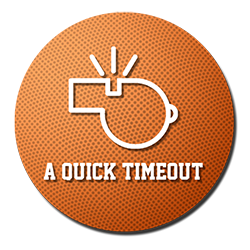When I first starting hearing coaches talk about conceptual offense, I remember thinking, “Yeah, but how do you get the players to know what to do next?” The answer lies in teaching players to understand and execute “triggers” within the offense.
Here’s how to do just that…

Start with The Core Principles for Conceptual Offenses
Miller: There must be some core principles that the everything is built on; otherwise, you just have guys running around out there. What were those for you?
Cascio: First, you must have principles of play for your spacing. What is going to be your shape on the floor? Are we going be 4-out, 1-in, 5-out? Do we flow in and out of multiple spacing templates? Do we go from 4-out to 5-out and back to 4-out? And then second is ball movement. We always talk .5 in conceptual offense. That’s usually when the advantage is created. Nothing stops the ball from moving. The third principle is player movement. Simply put, the player above you tells you what to do. The key to all this is – how do we give some tangible things that our players can latch on to?
Miller: When you watch a team like the Golden State Warriors play, most people can identify “good offense.” But if I were to ask them, “What makes ‘good offense’?” A lot of times, we kind of stumble around. So, what does make for “good offense?”
Cascio: What sticks out to me is the pace at which teams like the Warriors run their offense. For example, you get Steph in get game. He drives it off the hand back, skips it to the corner. We get an uphill BHO right out of the corner. Then we feed a post, and we’re in split action. It’s constant sequencing of actions and making defense guard two and three and four things in a row. That’s when we’re watching and are like, “Oh, that’s a great possession.” And then once the advantages is created, it’s dominoes. It’s .5. That’s the fun part of offense to me.
Listen to the Full Podcast Now
Key Takeaways
- Just like any other “good” offense, the core principles for conceptual offense are built off of spacing, ball movement, and player movement.
- Coaches should focus on helping players recognize triggers that will cue actions in the offense.
- When installing a conceptual offense, coaches should start with simpler concepts and build on them over time.
- The offense should flow seamlessly, with triggers helping players transition between different actions based on how the defense reacts.
A 4v4 Small-Sided Game for Teaching Triggers
SAVI Coaching’s Tyler Coston explains “Flow Game,” a 4v4 small-sided game to teach offensive concepts and triggers. Click here to get the full clinic session, Trigger Actions for Concept-Based Offense.
Games-Based Coaching with Small-Sided Games with Coach Mark Cascio
SAVI Coaching’s Mark Cascio shares some of his favorite small-sided games in this clinic, including:
- Buidling communication through drills
- Outnumbered games
- 4v4 SSGs
- Ball screen SSGs
- Defensive SSGs
- Shooting SSGs
- Finishing SSGs
Get the full clinic here, Games-Based Coaching with Small-Sided Games with Mark Cascio.

For more FREE basketball coaching content, join thousands of coaches who subscribe to my weekly newsletter.

